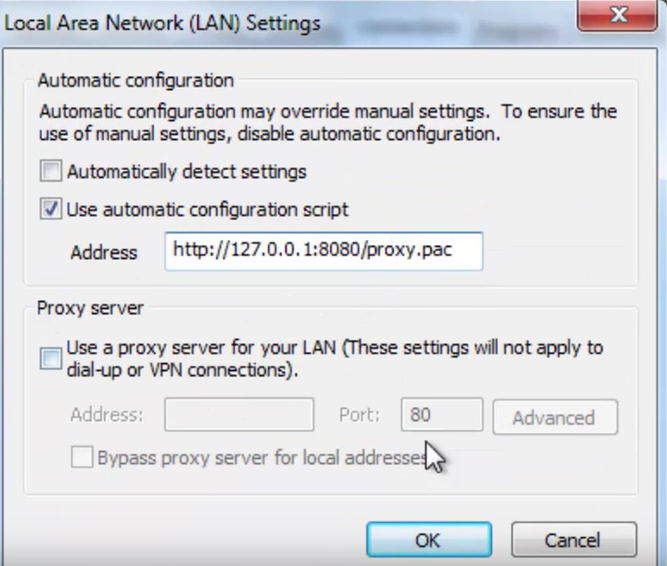http://127.0.0.1:8080/proxy.pac virus
What is http://127.0.0.1:8080/proxy.pac virus?
http://127.0.0.1:8080/proxy.pac virus is a threat that shows fake pop-ups claiming that users’ systems are heavily infected with malicious software, there is an application missing, or users need to update some kind of program. If you see a pop-up message with a warning from http://127.0.0.1:8080/proxy.pac virus, do not pay attention to it and definitely not click on the pop-up itself because you might cause serious harm to your system really quickly. We understand that http://127.0.0.1:8080/proxy.pac virus acts in a really annoying way, and it might not even allow users to surf the web freely because it appears on all the browsers while users are surfing the web. Therefore, we highly recommend that you remove http://127.0.0.1:8080/proxy.pac virus as soon as you can. It might not be very easy to delete http://127.0.0.1:8080/proxy.pac virus, so we highly recommend that you read through this article in order to find out what you have to do next.

Why is http://127.0.0.1:8080/proxy.pac virus dangerous?
As has been mentioned, http://127.0.0.1:8080/proxy.pac virus is dangerous in a sense that it generates fake pop-ups. After clicking on such a pop-up users might initiate the download of a bunch of malicious applications or he/she might be taken to the website that promotes malicious software. You might not even notice how malware enters your system. Many users decide not to pay attention to these pop-ups generated by http://127.0.0.1:8080/proxy.pac virus because they can be closed rather easily; however, we suggest that you eliminate them all completely because it is still possible to click on them accidentally. As you can see, it is not a good idea to keep http://127.0.0.1:8080/proxy.pac virus on board. Therefore, it would be wise to uninstall http://127.0.0.1:8080/proxy.pac virus as soon as possible. This threat might also perform other activities behind your back, for example, it might collect information about you and connect to the Internet, so the longer you keep it, the more harm it might do.
How did http://127.0.0.1:8080/proxy.pac virus enter my system?
We are sure that you have not downloaded this threat yourself. Of course, you might have initiated its installation by downloading some kind of unreliable program or clicking on an untrustworthy link. It might have entered your system if you have opened an infectious email attachment too. Either way, make sure that you delete http://127.0.0.1:8080/proxy.pac virus as soon as possible. If you do not want to encounter such harmful threats in the future again, install a security tool on the system right now and surf the web more attentively in the future.
How to remove http://127.0.0.1:8080/proxy.pac virus from my system?
In order not to see fake pop-ups anymore, you have to implement the http://127.0.0.1:8080/proxy.pac virus removal as soon as possible. Unfortunately, we cannot say that it will be easy to do that. In fact, ordinary computer users will probably not be able to remove http://127.0.0.1:8080/proxy.pac virus manually because this threat applies many changes to the system. Luckily, you can still implement the http://127.0.0.1:8080/proxy.pac virus removal – download and install a security tool and then scan your system with it.
Remove http://127.0.0.1:8080/proxy.pac infection:
- Press Win + R and it will open Run dialog box — Type “regedit” and hit OK.
- Navigate to Go to HKEY_CURRENT_USER \Software \ Microsoft \ Windows \ Current Version \ Internet Settings
- Find ProxyEnable and Modify the key value if it is set to 1 then change it to 0.
- Find the ProxyServer Key and Delete it.
- Reboot Your computer, after that you won’t get your proxy server keeps changing to 127.0.0.1:8080
Site Disclaimer
WiperSoft.com is not sponsored, affiliated, linked to or owned by malware developers or distributors that are referred to in this article. The article does NOT endorse or promote malicious programs. The intention behind it is to present useful information that will help users to detect and eliminate malware from their computer by using WiperSoft and/or the manual removal guide.
The article should only be used for educational purposes. If you follow the instructions provided in the article, you agree to be bound by this disclaimer. We do not guarantee that the article will aid you in completely removing the malware from your PC. Malicious programs are constantly developing, which is why it is not always easy or possible to clean the computer by using only the manual removal guide.
